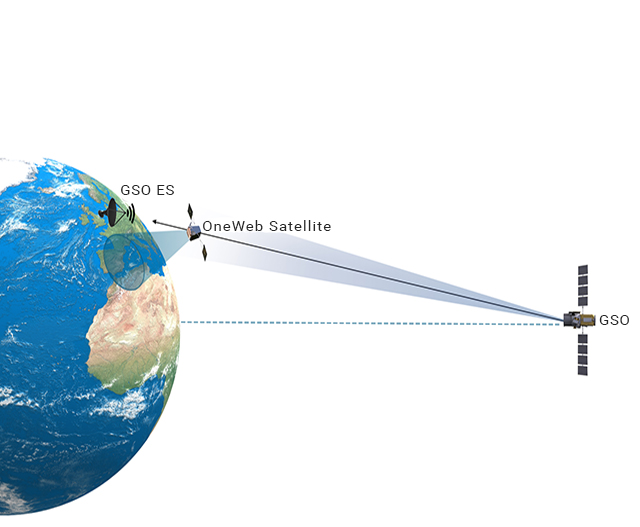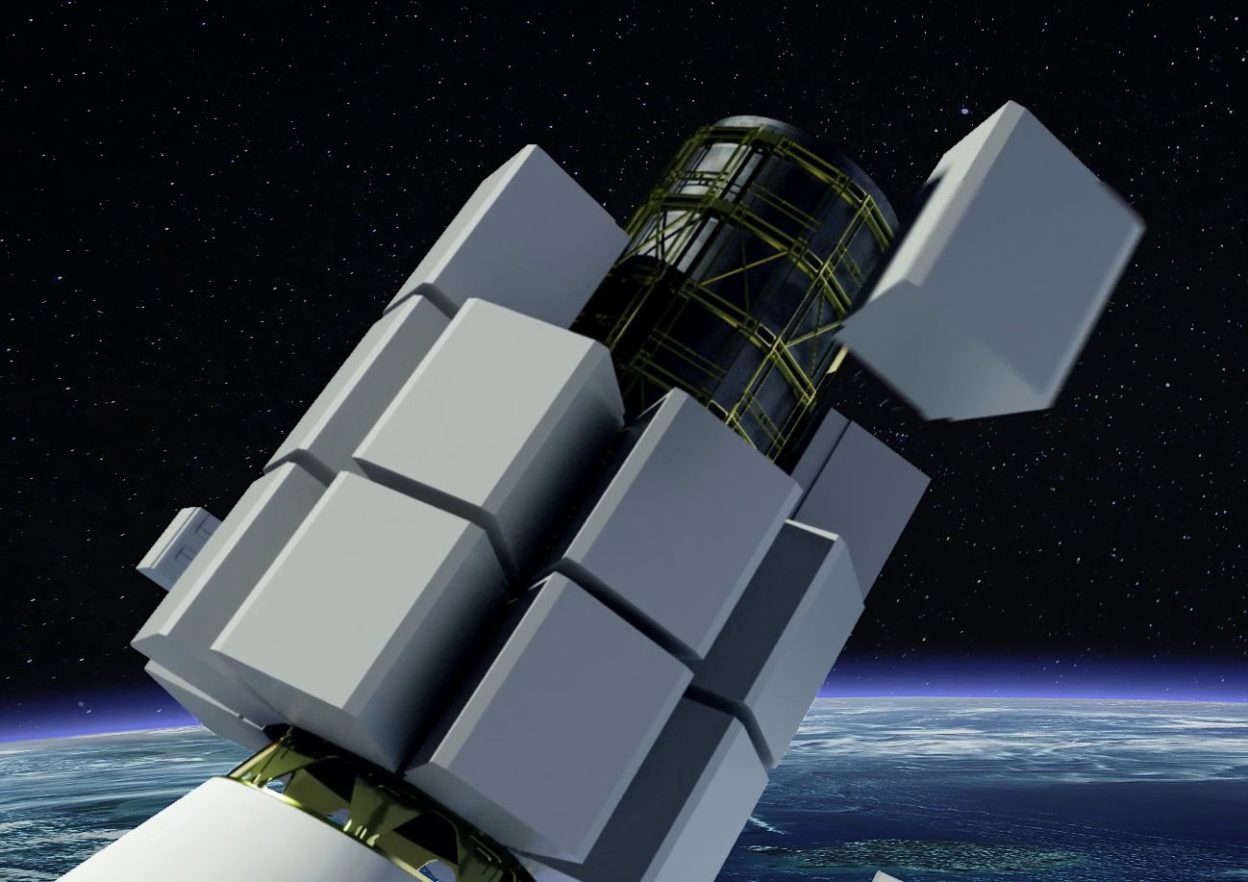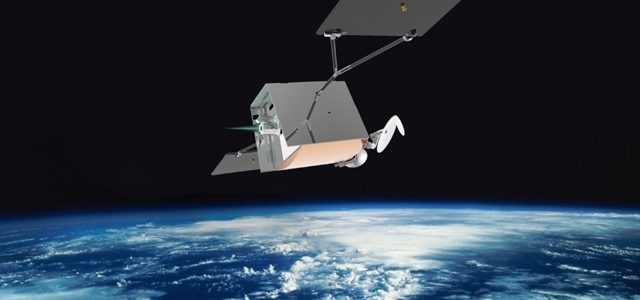Broadband for All – OneWeb and European Industry in the Lead

Short distance between the satellite and the users. Figure: OneWeb.
The ultimate goal of providing quick broadband for all, independent of geographical locations on the globe is not an unattainable goal, however, it requires huge investments and is challenging at best. Using the existing satellites in geostationary orbits does not provide customers with the desired speed for the broadband service. The orbits must be lowered, but with a lower altitude the covered areas decrease, and more satellites must be deployed. The dilemma seems to be that high speed requires low orbits and low orbits require more satellites; thus, the concept of “ Megaconstellations”.
Today, the OneWeb a system with 648 small satellites in an altitude of 1200 km, is possibly the most realizable project. The main funding is secured, the first satellites are in production and launchers are ordered.
OneWeb is a satellite constellation designed to provide worldwide Internet access for individual consumers and airlines. The current design of the OneWeb satellite network consists of 648 micro satellites of about 125 kg and operating in 1200 km orbits. Each satellite can deliver at least 8 gigabits per second of throughput to provide Internet access to homes and mobile platforms using its high throughput Ku-band payload. OneWeb will order about 900 satellites, at a price targeted at about $ 500 000. The satellites will have a life span of seven years or more.

Dispenser for 32 OneWeb satellites. Figure: OneWeb/RUAG Space Sweden
The European Airbus Defence and Space was selected to build the satellites, thus, providing possibilities for other European industrial companies to participate in development and production. The first ten satellites will be built at Toulouse, France, while the remainder will be built at a dedicated factory near Cape Kennedy, USA. RUAG Switzerland will build the mechanical skeletal structures of the satellites, while RUAG Sweden, Linköping, will build the dispenser system at the top of the different types of launchers. Launchers will be different types of Soyuz, the new Ariane 6, the planned Virgin’s Launcher One and five launches with the New Glenn rocket.
The OneWeb satellites will be launched into a near polar orbit at an altitude of 500 km before raising themselves on their onboard electric propulsion to their operational orbit at 1200 km. The first launch is planned for late 2018.
The satellites are small, only 125 kg and one launcher can deploy a series of satellites; the launcher dispenser can handle up to 32 satellites in a single launch. Series of such small and uniform satellites have many advantages.
So far, the idea of mass production of satellites has never been applied, but satellites can be made in the same way as cars, airplanes, avionics equipment etc., additionally, they have fewer components, lighter weight, they are easier to manufacture and cheaper to launch, thus, cheaper to lose.
Via Satellite 05-23-2016] Arianespace has signed a contract with OneWeb to design, qualify and supply 21 payload dispensers for the deployment of the company’s small satellite constellation, along with five more on option. Ruag Space in Sweden will be the prime contractor in charge of development and production of the dispenser systems, which will first secure the satellites during their flight to Low Earth Orbit (LEO) and then release them into space. The dispensers are designed to accommodate up to 32 spacecrafts per launch, allowing Arianespace to deliver the larger part of the OneWeb constellation over a period of 18 months, starting in 2018.
OneWeb signed a launch contract with Arianespace in June 2015 for 21 Soyuz launches, along with options for five additional Soyuz launches and three Ariane 6 launches. The company also signed 39 launches, with options for 100 more, to Virgin Galactic using LauncherOne, which is scheduled to start test missions in 2017, preceding orbital missions in 2018. In March 2017 an agreement for five launches of the New Glenn rocket was made.
Broadband for All Equals Megaconstellations of Satellites
Today, several systems with hundreds, even thousands of broadband satellites system – the so-called “Megaconstellations” are being developed and partly being manufactured. According to Northern Sky Research it is expected that at least 15 companies have ambitions to develop broadband satellite constellations over the next few years.
All these satellites are often called “A Smallsat Tsunami”, especially by those people who are sceptical to the large number of satellites in the part of space where most of space debris is concentrated, causing what they fear; collisions and creating additional debris.
In the orbit height of 600 km, straight above (like above) the International Space Station, Commsat, China and Yaliny, Russia will place respectively 600 and 135 satellites. Most of the satellites will be placed in the zone between 1000 and 1400 km, nearly 13500 satellites distributed by 11 companies. In the very high orbits, outside 1400 km, the plan is to distribute about 650 satellites, all of whom are distributed by three companies.
However, it is worth noting that some of these plans may not be more than wishful thinking. The main challenges are funding the main objectives, and since these investments are considered high risks, it remains to be seen what ultimately happen.
Featured image: Credit OneWeb


